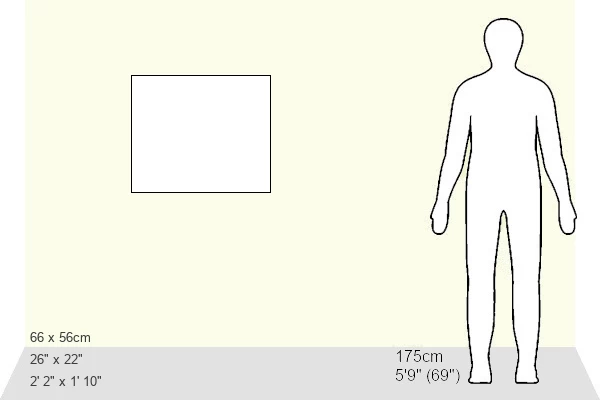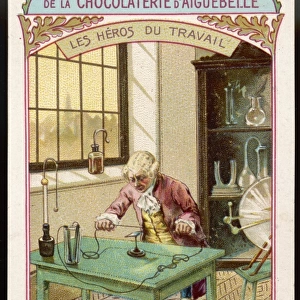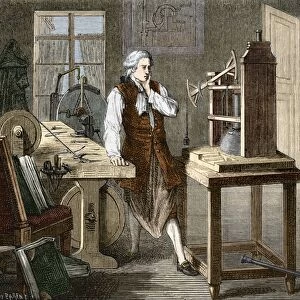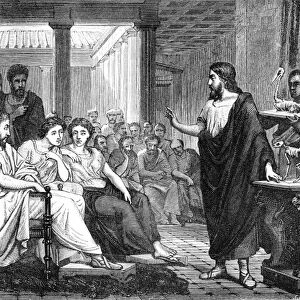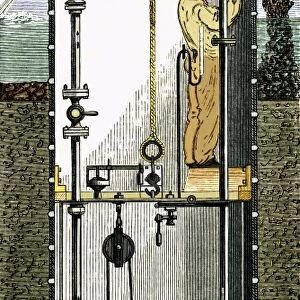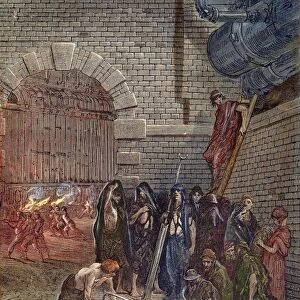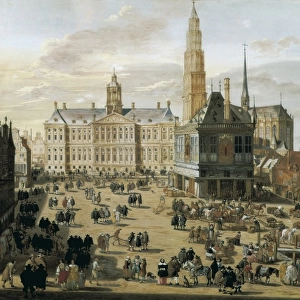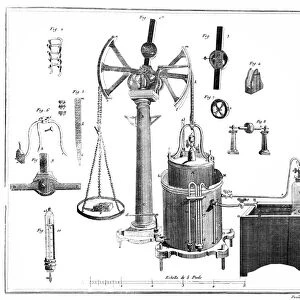Fine Art Print : Morses telegraph receiver
![]()

Fine Art Prints from Science Photo Library
Morses telegraph receiver
Morses telegraph. Historical artwork of the receiver of a telegraph machine used to communicate in Morse code. The messages arrived at the receiver in wires as a series of long and short electrical pulses. Electromagnets attached to a printing head then converted these into dashes and dots respectively. In Morse code, each letter and number is represented by a combination of dots and dashes. The code was printed on a stream of ticker tape, which was collected at far left. Morse sent the first telegraph message in 1844. For an image of the transmitter, see image V400/068
Science Photo Library features Science and Medical images including photos and illustrations
Media ID 6441705
© SCIENCE, INDUSTRY & BUSINESS LIBRARY/NEW YORK PUBLIC LIBRARY/SCIENCE PHOTO LIBRARY
Code Communication Communications History Of Science Receiver Reception Samuel Telegraphy Transmission Mono Chrome Morse Receivers
20"x16" (+3" Border) Fine Art Print
Step back in time with our exquisite selection of Fine Art Prints from the Media Storehouse. This captivating image of a Morse telegraph receiver, taken from the Science Photo Library, transports you to the era of groundbreaking communication technology. Witness the beauty and intricacy of this historical artwork, as the receiver awaits the arrival of Morse code messages through a series of long and short wires. Add a touch of history and sophistication to your space with these stunning, museum-quality prints.
20x16 image printed on 26x22 Fine Art Rag Paper with 3" (76mm) white border. Our Fine Art Prints are printed on 300gsm 100% acid free, PH neutral paper with archival properties. This printing method is used by museums and art collections to exhibit photographs and art reproductions.
Our fine art prints are high-quality prints made using a paper called Photo Rag. This 100% cotton rag fibre paper is known for its exceptional image sharpness, rich colors, and high level of detail, making it a popular choice for professional photographers and artists. Photo rag paper is our clear recommendation for a fine art paper print. If you can afford to spend more on a higher quality paper, then Photo Rag is our clear recommendation for a fine art paper print.
Estimated Image Size (if not cropped) is 50.8cm x 35.6cm (20" x 14")
Estimated Product Size is 66cm x 55.9cm (26" x 22")
These are individually made so all sizes are approximate
Artwork printed orientated as per the preview above, with landscape (horizontal) orientation to match the source image.
EDITORS COMMENTS
This historical artwork showcases the receiver of a Morse telegraph machine, an iconic device used for communication through Morse code. The intricate system involved messages being transmitted as electrical pulses along wires, which were then received by this receiver. Electromagnets connected to a printing head ingeniously transformed these pulses into dots and dashes, representing letters and numbers in Morse code. The resulting coded message was printed on ticker tape that accumulated at the far left of the image. Morse code revolutionized long-distance communication when it was first introduced in 1844 by Samuel Morse himself, who sent the inaugural telegraph message. This remarkable invention marked a significant milestone in the history of science and technology. The monochrome illustration beautifully captures the essence of this groundbreaking technology while highlighting its importance in shaping our world today. It serves as a reminder of how far we have come from these early forms of communication to our modern-day instant messaging systems. This thought-provoking artwork not only pays homage to the ingenuity behind Morses' telegraph but also invites us to reflect on how advancements in transmission and reception have shaped human interaction throughout history.
MADE IN AUSTRALIA
Safe Shipping with 30 Day Money Back Guarantee
FREE PERSONALISATION*
We are proud to offer a range of customisation features including Personalised Captions, Color Filters and Picture Zoom Tools
SECURE PAYMENTS
We happily accept a wide range of payment options so you can pay for the things you need in the way that is most convenient for you
* Options may vary by product and licensing agreement. Zoomed Pictures can be adjusted in the Cart.



